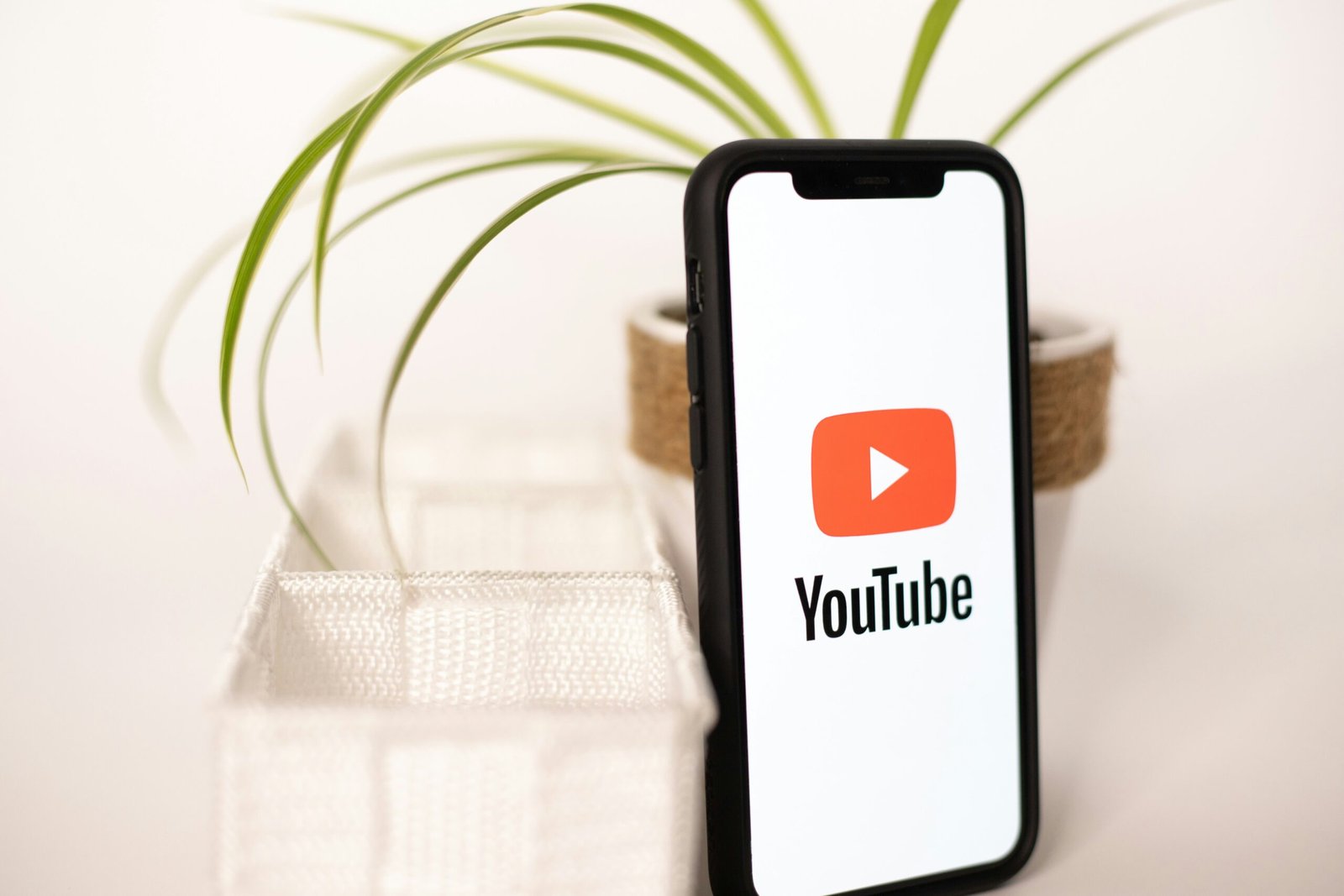Influencer marketing is a strategy that leverages individuals with significant online followings to promote products, services, or brands. Unlike traditional advertising channels, influencer marketing focuses on influential figures who can sway their audience’s purchasing decisions through authentic and relatable content. This approach has roots in the early days of celebrity endorsements, where brands would capitalize on the fame and appeal of well-known personalities to drive consumer interest and sales.
The concept of influencer marketing is not entirely new. Historically, brands have always sought ways to align themselves with influential figures to enhance their image and credibility. However, the digital age has transformed this practice significantly. With the advent of social media platforms like Instagram, YouTube, and TikTok, the definition of an ‘influencer’ has expanded beyond traditional celebrities to include content creators, bloggers, and even everyday individuals who have built substantial followings in niche communities.
Influencer marketing has gained prominence due to its ability to create authentic connections between brands and consumers. Unlike traditional advertising, which can often feel impersonal and intrusive, influencer marketing allows for more personalized and engaging interactions. Influencers, through their content, provide genuine endorsements and reviews, which resonate more deeply with their audience. This authenticity helps in building trust and fostering long-term loyalty among consumers.
The rise of social media has played a crucial role in the evolution of influencer marketing. Platforms like Instagram and YouTube have given influencers the tools to create and share content effortlessly, reaching millions of followers with a single post or video. This shift has democratized the concept of influence, enabling individuals from various backgrounds and interests to become powerful voices in the marketing landscape. As a result, brands now have the opportunity to connect with highly targeted and engaged audiences, making influencer marketing an indispensable part of modern marketing strategies.
Types of Influencers
Influencer marketing hinges on the diverse profiles and reach of various types of influencers. These influencers can be categorized into four main types: mega-influencers, macro-influencers, micro-influencers, and nano-influencers. Each category comes with distinct characteristics, audience sizes, and engagement levels, making them suitable for different marketing strategies.
Mega-influencers are the top-tier in the influencer hierarchy, often possessing millions of followers. These individuals are typically celebrities, athletes, or high-profile personalities with a substantial online presence. Their extensive reach makes them ideal for brand awareness campaigns. However, their engagement rates may be relatively lower compared to other influencer types due to the vast audience size. Examples include household names like Cristiano Ronaldo or Kylie Jenner.
Macro-influencers have follower counts ranging from hundreds of thousands to a few million. These influencers are usually professional content creators or industry experts. While they may not have the same level of fame as mega-influencers, they often boast a more engaged audience. Macro-influencers are effective for campaigns requiring a broad yet targeted reach. An example would be a well-known travel blogger or a popular YouTube personality.
Micro-influencers typically have followers numbering between 10,000 and 100,000. These influencers are often seen as more relatable and trustworthy by their followers, leading to higher engagement rates. They tend to have niche audiences, making them perfect for brands targeting specific demographics. Micro-influencers excel in creating authentic and personal content, often driving higher conversion rates. For instance, a beauty enthusiast with a dedicated following on Instagram falls into this category.
Nano-influencers are at the lower end of the spectrum, with fewer than 10,000 followers. Despite their smaller audience, they often exhibit the highest engagement rates due to the close-knit nature of their communities. Nano-influencers are ideal for hyper-local marketing efforts or campaigns that emphasize genuine, personal connections. They are often everyday individuals who have built a loyal following based on trust and authenticity. An example could be a local fitness trainer with a strong social media presence.
Understanding these categories helps brands to strategically align their influencer marketing efforts with their goals, ensuring efficient and impactful campaigns.
Benefits of Influencer Marketing
Influencer marketing has emerged as a powerful strategy for brands aiming to enhance their visibility and credibility in the digital landscape. One of the primary benefits of influencer marketing is the significant boost in brand awareness. Influencers, with their substantial follower base, can introduce a brand to a wider audience, thereby increasing its reach and visibility. This heightened exposure is crucial for brands looking to establish a robust online presence.
Another key advantage is the improved credibility and trust that come with influencer endorsements. Unlike traditional advertising, which can sometimes be perceived as impersonal or insincere, influencer marketing leverages the established trust between influencers and their followers. When an influencer recommends a product or service, it is often seen as a genuine endorsement, enhancing the brand’s credibility and fostering trust among potential customers.
Higher engagement rates are also a notable benefit of influencer marketing. Influencers often have highly engaged audiences who actively interact with their content. This engagement can translate into increased likes, comments, shares, and overall interaction with the brand’s posts, driving more traffic and potential conversions. Compared to traditional advertising methods, influencer marketing can achieve higher levels of interaction and connection with the target audience.
Cost-effectiveness is another compelling advantage. While traditional advertising can require substantial budgets, influencer marketing can be more economical, especially for brands that collaborate with micro or nano-influencers. These influencers, although having smaller followings, often deliver high engagement rates and can be more affordable, making influencer marketing accessible to brands of all sizes.
Moreover, influencers can help brands reach niche markets effectively. By selecting influencers whose followers align with specific demographic or interest groups, brands can tailor their marketing efforts to target audiences more precisely. This targeted approach can result in more meaningful connections and higher conversion rates.
Lastly, influencers are adept at creating authentic content that resonates with their audience. This user-generated content can be a valuable asset for brands, providing them with a wealth of genuine and relatable material to use in their marketing campaigns. Authentic content not only enhances the brand’s image but also encourages higher levels of engagement and trust among consumers.
Building an Influencer Marketing Strategy
Developing a robust influencer marketing strategy is fundamental to achieving your brand’s goals. The first step is to identify clear objectives. Whether it’s increasing brand awareness, driving sales, or enhancing customer engagement, establishing specific goals will guide your entire campaign. Clearly defined objectives set the foundation for evaluating the success of your influencer marketing efforts.
Once goals are set, selecting the right influencers becomes crucial. The chosen influencers should align not only with your brand values but also with your target audience. Conduct thorough research to find influencers whose followers mirror your ideal customer profile. Tools like social media analytics and influencer marketing platforms can aid in identifying influencers who have genuine engagement and credibility within your industry.
Budget allocation is another critical component of your strategy. Determine how much you are willing to invest in influencer partnerships. Consider factors such as the influencer’s reach, engagement rate, and the type of content they produce. A balanced budget ensures that you can collaborate with influencers who can deliver substantial value without overspending.
Creating compelling content is at the heart of any successful influencer campaign. Work closely with influencers to develop authentic and engaging content that resonates with their audience while staying true to your brand message. Whether it’s sponsored posts, product reviews, or giveaways, the content should be creative and relevant, encouraging followers to take action.
Establishing metrics for success is essential for tracking the performance of your influencer marketing strategy. Key performance indicators (KPIs) such as engagement rates, click-through rates, conversion rates, and return on investment (ROI) provide insights into the effectiveness of your campaign. Regularly monitoring these metrics allows for adjustments and optimization, ensuring continuous improvement.
Lastly, it is vital to ensure that the influencer’s audience aligns with your brand’s target market. This alignment enhances the authenticity of the promotion and increases the likelihood of reaching potential customers who are genuinely interested in your products or services. By carefully considering these elements, you can build a successful influencer marketing strategy that drives meaningful results for your brand.
Finding and Choosing the Right Influencers
Identifying and selecting the right influencers is a pivotal aspect of any successful influencer marketing strategy. To begin with, brands must determine the type of influencers who align with their goals and target audience. This involves considering factors such as niche relevance, audience demographics, and engagement rates. For instance, if a brand focuses on eco-friendly products, partnering with influencers who advocate for sustainability will ensure alignment with the brand’s values and audience interests.
Several tools and platforms can assist in discovering potential influencers. Platforms like HypeAuditor, BuzzSumo, and Traackr offer comprehensive databases and analytics to help brands find influencers based on specific criteria. These tools analyze metrics such as follower count, engagement rates, and audience demographics to provide a clear picture of an influencer’s reach and impact. Additionally, social media platforms themselves, such as Instagram’s Explore page or Twitter’s trending hashtags, can be valuable resources for finding influencers organically.
When evaluating potential influencers, authenticity and relevance are key. Authentic influencers have a genuine connection with their followers, which translates into higher engagement and trust. Brands should examine an influencer’s content quality, consistency, and the nature of their interactions with followers. Engagement rate, which measures the level of interaction an influencer receives relative to their follower count, is a crucial metric. A high engagement rate often indicates that an influencer’s audience is actively interested and invested in their content.
Once the right influencers are identified, the next step is to initiate contact and build a relationship. Personalized outreach is essential; generic messages are less likely to elicit a positive response. Brands should express a genuine interest in the influencer’s work and propose a mutually beneficial collaboration. Clear communication of expectations, deliverables, and compensation will lay the groundwork for a successful partnership. Building a long-term relationship with influencers can lead to more authentic and impactful collaborations, ultimately driving better results for the brand.
Executing Influencer Campaigns
Executing influencer marketing campaigns requires meticulous planning and coordination to ensure successful outcomes. The first step involves identifying the right influencers who align with the brand’s values and have a genuine connection with the target audience. This can be achieved through thorough research and the use of influencer marketing platforms that provide insights into an influencer’s reach, engagement rates, and audience demographics.
Once the right influencers are selected, the next phase involves content creation and approval processes. Clear communication of the campaign objectives, brand guidelines, and expected deliverables is essential. Collaborating with influencers to create authentic and engaging content that resonates with their followers is crucial. It is important to allow influencers creative freedom while ensuring the content aligns with the brand’s messaging. An efficient approval process should be in place to review and approve content before it goes live, maintaining the balance between creative expression and brand coherence.
Timeline management is another critical aspect of executing influencer campaigns. Developing a detailed campaign timeline that outlines key milestones, deadlines, and deliverable dates helps in keeping the campaign on track. Regular check-ins and updates with influencers can ensure that the campaign progresses smoothly and any potential issues are addressed promptly.
Ensuring compliance with advertising regulations is paramount in influencer marketing. Brands must educate influencers about the legal requirements for disclosing sponsored content, such as using appropriate hashtags (#ad, #sponsored) and clearly stating the nature of the partnership. Adhering to these regulations not only builds trust with the audience but also protects both the brand and the influencer from potential legal repercussions.
Examples of successful influencer campaigns can offer valuable insights into best practices. For instance, the collaboration between Daniel Wellington and various fashion influencers resulted in a significant increase in brand awareness and sales. Another notable example is the campaign by Audible, which partnered with YouTube creators to promote its audiobook services, leading to a substantial uptick in subscriptions. These examples highlight the importance of strategic planning, authentic content creation, and effective collaboration in executing successful influencer marketing campaigns.
Measuring the Success of Influencer Marketing
Measuring the success of influencer marketing is pivotal to understanding its impact and optimizing future campaigns. Key performance indicators (KPIs) serve as essential metrics to gauge the effectiveness of these marketing efforts. Among the most crucial KPIs are engagement rates, reach, conversions, and return on investment (ROI).
Engagement rates are a primary metric, reflecting how actively the audience interacts with the content. This includes likes, comments, shares, and other forms of online interaction. A higher engagement rate signifies that the influencer’s content resonates well with their followers, thereby enhancing brand visibility and connection.
Reach is another vital KPI, indicating the number of unique individuals who have seen the influencer’s content. It offers insights into the potential audience size and the overall exposure your brand receives through the influencer’s platform. A broader reach often translates to increased brand awareness.
Conversions, which can be tracked through specific call-to-actions (CTAs) such as sign-ups, purchases, or downloads, are critical for measuring the direct impact of influencer marketing on your business goals. Conversions provide concrete evidence of how effectively the influencer’s content drives desired actions among their followers.
Return on investment (ROI) is a comprehensive metric that encapsulates the overall financial effectiveness of an influencer marketing campaign. Calculating ROI involves comparing the revenue generated from the campaign to the total costs incurred. A positive ROI indicates that the investment in influencer marketing has yielded profitable results.
Utilizing analytics tools is indispensable for accurately measuring these KPIs. Platforms like Google Analytics, social media insights, and specialized influencer marketing software can provide detailed performance data. This data-driven approach allows marketers to refine their strategies, ensuring better alignment with business objectives and enhanced campaign outcomes.
Adjusting strategies based on performance data is essential for continuous improvement. By regularly analyzing KPIs and making informed adjustments, marketers can maximize the effectiveness of their influencer marketing efforts, ultimately driving sustained growth and success.
Future Trends and Challenges in Influencer Marketing
As influencer marketing continues to evolve, several emerging trends are poised to shape its future landscape. One significant development is the rise of virtual influencers. These computer-generated personas are increasingly being utilized by brands for their ability to engage audiences without the unpredictability associated with human influencers. Virtual influencers offer a unique blend of creativity and control, allowing brands to craft tailored messages while maintaining consistent engagement.
Artificial intelligence (AI) is another influential factor transforming influencer marketing. AI-driven tools are enhancing the way brands identify and collaborate with influencers, providing deeper insights into audience demographics, engagement rates, and content performance. This technology enables brands to make data-driven decisions, optimize campaigns in real time, and predict trends with greater accuracy. The integration of AI is streamlining processes and creating more efficient and effective marketing strategies.
A growing emphasis on authenticity and transparency is also reshaping the influencer marketing landscape. Audiences are becoming more discerning, valuing genuine content and ethical practices over overtly commercialized endorsements. Influencers who prioritize authenticity and transparency are likely to foster stronger connections with their followers, enhancing brand loyalty and trust. This shift underscores the importance of aligning influencer partnerships with a brand’s core values and messaging.
However, the future of influencer marketing is not without its challenges. Influencer fraud, including fake followers and engagement, remains a significant concern. Brands must employ robust verification processes and leverage technology to mitigate these risks. Market saturation is another issue, as the proliferation of influencers can make it difficult for brands to stand out. Identifying niche influencers and focusing on quality over quantity will be crucial strategies moving forward.
Additionally, changing social media algorithms pose an ongoing challenge, as they can impact the visibility and reach of influencer content. Staying adaptable and continuously refining strategies will be essential for brands to navigate these shifts effectively. By understanding and addressing these emerging trends and challenges, brands can harness the full potential of influencer marketing in an ever-evolving digital landscape.



